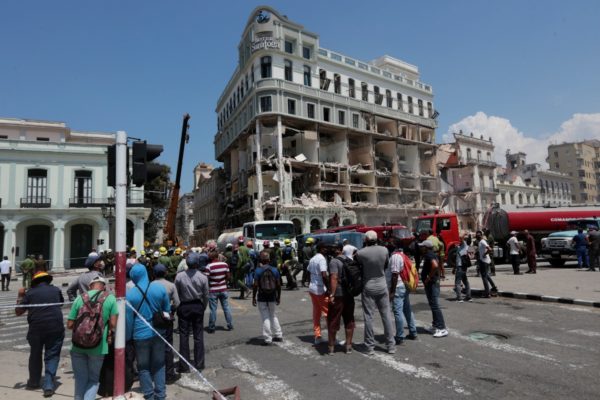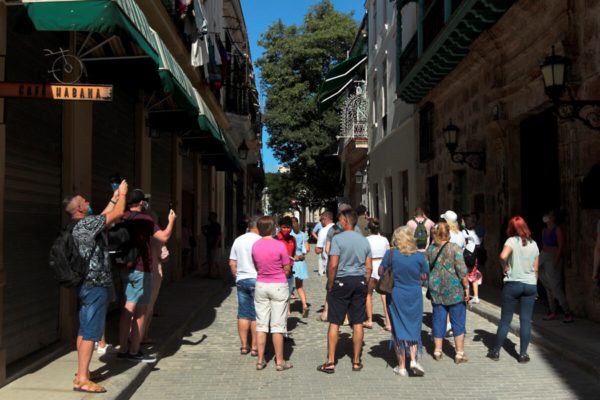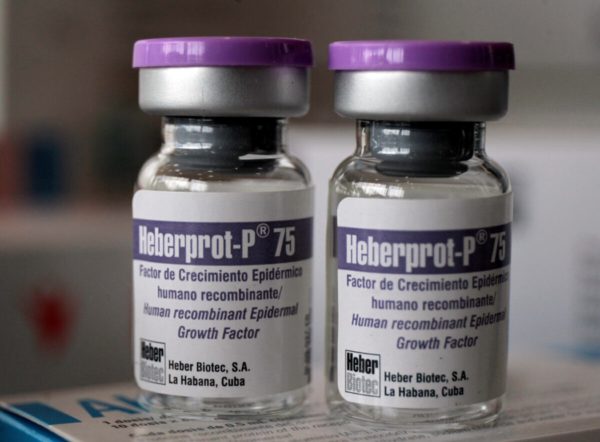Cuba’s Tourism Industry Recovery Postponed to 2023

By Luis Brizuela (IPS)
HAVANA TIMES – The partial destruction of the iconic Hotel Saratoga in a crowded and historic area of the Cuban capital tarnished the end of the International Tourism Fair which was taking place in the resort town of Varadero. The event had sought to breathe new life into this industry’s slow recovery.
During the Fair, forecasts of reaching at least 2.5 million foreign visitors this year faded and it’s hard to make out the possible impact the Saratoga tragedy will have on this Caribbean island’s tourist industry.
Back in Havana
“The lights flickered, I felt the explosion and the apartment trembled. All in a second. I was really frightened. I thought Tallapiedra thermal power station on the outskirts of Havana Bay had blown,” Carmen Ortiz, a local living just 400 meters away from the catastrophe, said.
On Friday May 6, at approximately 10:50 AM, an explosion severely damaged the Saratoga’s neoclassical structure, which had been built in 1880 and was reopened to the public in 2005 as a 5 star hotel, just a few steps away from the Capitolio building, now the seat of the National Assembly People’s Power, Cuba’s unicameral parliament.
Another 23 buildings around the hotel also suffered damages, including residential apartment buildings.
The Government quickly dismissed the incident as an attack and announced that there had been a liquid gas leak when a tanker truck was unloading this into the hotel’s tank, although investigations are still underway.
“I went to my balcony and saw the smoke. I knew something serious had happened from the sound of firetrucks nearby and what people were saying on the street. My husband had gone out to the agro-market and I called him straight away. People thought it was a bomb at first,” Ortiz told IPS while she watched firefighters and rescue workers search for survivors amid the rubble.
Today we know the catastrophe left a toll of at leat 45 fatalities – including four children, a pregnant woman and a Spanish tourist – while scores were hospitalized with injuries of varying degree many of whom have already been discharged. Meanwhile, the search continued for potential survivors among the ruins.
The hotel had been set to reopen on Monday 10th, after two years of being closed. If it had been occupied by tourists the death toll would have been considerably higher.

Tourism in figures
The incident coincided with the closing ceremony of the 40th edition of the International Tourism Fair, which was taking place in Varadero, the country’s main tourist destination, 130 km east of Havana. The annual Fair had been suspended since 2020 because of COVID-19.
At one of the Fair’s activities between May 3rd and 5th, Prime Minister Manuel Marrero confirmed that the tourism industry would recover in 2023 – and not in 2022 like they had expected.
“Cuba’s Tourist Product needs to improve further, because quality often doesn’t go hand-in-hand with prices. Business owners also need to be more proactive and modernize the way they set up businesses and attract potential clients,” tourist guide Sergio Mendez, an employee of the Cubatur travel agency and Havana resident, told IPS.
He believes that “we also have to think about the network outside the State hotels that stretches beyond restaurants and museums, because tourists coming back, spending more and contributing towards the economy of SMEs and families depends on its conditions, products, services and prices,” Mendez added.
He noted that within the Caribbean, Cancun (Mexico) or the Dominican Republic “which also have sun and beautiful beaches, like Cuba, have firmly established themselves within the market. Almost five million tourists went to the Dominican Republic in 2021, and over 2.3 million tourists have gone in the first four months of this year alone.
According to official statistics, Cuba welcomed 450,000 visitors from abroad during the first trimester of this year.
In the first three months of 2019 though, 1,470,457 visitors came to the island a little over 982,000 in 2020, when COVID-19 was running rampant across the world and borders closed.
Many Cuban economists consider the structure of the country’s investment decisions to be “deformed” in recent years, with more and more four and five star hotels being built, despite low occupancy rates and the economic crisis and shortages of basic essentials, including food, getting worse.
In 2020 alone, 45.6% of total investments were dedicated to business services, building activity and rentals, which includes tourism investments, compared to just 5.9% for agricultural activity, 0.9% for the public health and social welfare system and 0.6% for science and innovation. The statistics come from Cuba’s Office of Statistics and Information (ONEI).
The country has over 77,800 hotel rooms.
This tourist industry is one of the mainstays of the Cuban economy – along with exporting professional services – mainly of doctors -, and family remittances). In 2016 and 2017, tourism generated 3 billion USD in revenue per year, approximately 10% of the Gross Domestic Product (GDP), according to official figures.
The detente between Cuba and the United States during the last years of Barack Obama’s administration (2009-2017) boosted the arrival of US tourists that exceeded 600,000, with more flexible travel categories, authorization for cruise ships to moor and direct charter flights commencing to many of Cuba’s 15 provinces.
However, the tourism sector has been suffering since 2018 with a deterioration of US-Cuba relations and sanctions imposed by former president Donald Trump (2017-2021), which unraveled almost all of his predecessor’s measures.
With borders closing, rising unemployment because of a grinding halt to the global economy and other impacts the pandemic had on potential visitors, the number of tourists traveling to Cuba dropped from 4,275,558 in 2019 to less than 1.1 million in 2020 and barely 574,000 last year.

Prioritizing health tourism
During the Tourism Fair, an agreement was signed to push health tourism programs, considered a top priority, which includes hemodialysis treatment, and using thermal waters for long periods of time for psychiatric rehabilitation.
According to Doctor Rosario Garcia, “this is a suitable strategy, as long as profits allow us to buy medicines, supplies and equipment to offer a quality service to Cuban citizens being seen in institutions that form part of our [free and universal] public health system.”
When talking to IPS, Garcia sustained that “if health tourism becomes an option under the embargo (which the Cuban government calls the US blockade), then we will have to explain why there are still shortages of supplies at polyclinics and hospitals.”
For years now, Cuba’s tourism industry has offered medical programs and services linked to wellbeing and quality of life, in a country with approximately 100,000 doctors, 85,000 nurses and almost 60,000 technicians, with training that is internationally recognized.
Meanwhile, the Marketer of Cuban Medical Services Ltd. (CSMC S.A.) has proposed therapeutic procedures linked to treating addiction, diseases such as retinitis pigmentosa and vitiligo, as well as orthopedic, rheumatology or neurological ailments, etc.
Alongside renowned facilities such as the La Pradera International Health Center in Havana and international clinics in different provinces, the island has a biopharma industry that produces around a dozen vaccines, medicines and supplies of high value added.
Therapeutic vaccines such as CIMAvax-EGF for treating lung cancer, and drugs such as Heberprot-P, for advanced diabetic foot ulcers, stand out with evident improvements to patients’ quality of life, clinical trials show.
This industry is also responsible for producing three COVID-19 vaccines – Abdala, Soberana 02 and Soberana Plus – which have been administered to over 90% of 11.2 million Cubans on the island, which is a plus for safe tourism in the post-pandemic era.
These drugs are awaiting preselection as emergency vaccines used by the World Health Organization (WHO), which is holding up mass marketing, even though countries such as Iran, Vietnam, Venezuela, Nicaragua, Bolivia and Mexico have given the green light for its application.






It just so happened that I was at home in Cuba watching RT (Russian Television) at the time of the explosion. RT almost instantly reported the explosion and within minutes had video of people in the plaza looking at the Saratoga. I switched channels to TeleSur (Venezuelan TV), it too had live video at the scene. But it was fifty five minutes (55) before Cuban TV even referred to the explosion, and that was only when Diaz-Canel had appeared when he along with Marrero were in the forefront of the video. Es Cuba!
But mention of RT takes me to Ukraine and the Russian propaganda related to it. RT has been showing a lot of factual programmes about South American countries that Cubans can relate to. In consequence they think it is dependable, so that when Ukraine is discussed, Cubans think that the Russian view is the correct one. Clever and cunning! It takes imagination to think of Russia being persecuted and valiantly defending its citizens against a threatened Nazi invasion!